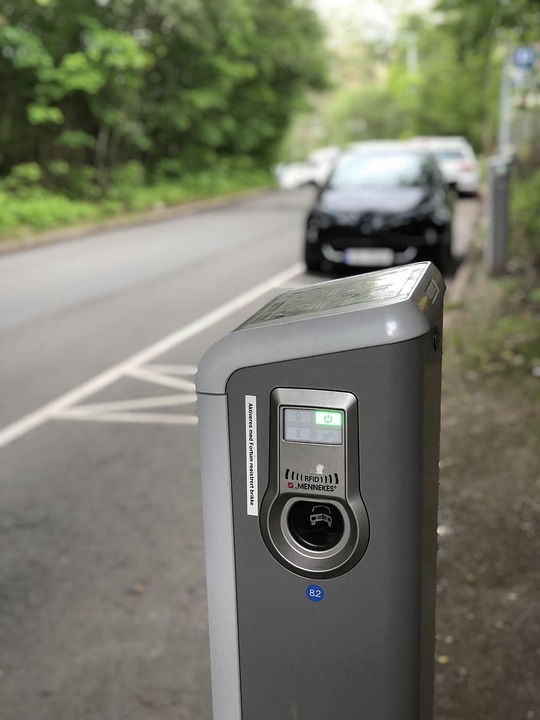The Ultimate Guide to Electric Vehicle Charging Stations: What You Need to Know
The world is witnessing a significant shift towards sustainability, and electric vehicles (EVs) are at the forefront of this revolution. As more consumers and businesses adopt electric vehicles, understanding the intricacies of electric charging stations has become essential. This comprehensive guide will delve into everything you need to know about electric charging stations, their types, availability, and how they can redefine the future of transportation.
Understanding Electric Charging Stations
Electric charging stations are vital infrastructures for recharging electric vehicles. They’re equipped to store electricity, which can then be dispensed to EVs when plugged in. With the surge in EV adoption—sales are projected to reach 23 million globally by 2030—charging stations are becoming increasingly pivotal to facilitate growth in this sector.
Types of Electric Charging Stations
When discussing electric charging stations, it’s crucial to understand there are primarily three types, each designed for different circumstances and charging needs:
-
Level 1 Charging Stations
- Description: These provide a standard 120-volt outlet, typically found at home.
- Charging Speed: Adds about 3-5 miles of range per hour.
- Best For: Overnight charging at home or workplaces.
-
Level 2 Charging Stations
- Description: Using a 240-volt outlet, these are commonly found in public locations.
- Charging Speed: Offers around 10-60 miles of range per hour.
- Best For: Commercial charging stations, shopping centers, and office buildings.
- DC Fast Charging Stations
- Description: These are the most powerful, delivering direct current at high voltage.
- Charging Speed: Can provide up to 80% charge in 30 minutes.
- Best For: Highway rest stops and quick charging needs during long trips.
Statistics Highlighting Electric Charging Stations
According to a recent report from the International Energy Agency, the number of public charging stations worldwide reached over 1.3 million in 2021, reflecting a 45% increase from 2020. Additionally, an analysis by Bloomberg New Energy Finance predicts that by 2040, EVs will represent 58% of global passenger vehicle sales, necessitating a robust network of charging stations to support this influx.
How to Locate Electric Charging Stations
Finding electric charging stations is now easier than ever, thanks to various apps and websites. A few popular options include:
- PlugShare: An app that provides real-time updates on charging station availability.
- ChargePoint: A comprehensive network with features like station location and charging speed info.
Example: Real-World Usage Scenario
Consider Lisa, a frequent traveler whose electric car enables her adventures. During her road trips, Lisa relies on Level 2 and DC Fast Charging stations. By using apps like PlugShare, she easily maps out charging stops along her journey, minimizing wait times and ensuring she reaches her destinations without hiccups.
Costs Associated with Electric Charging Stations
The cost of charging your electric vehicle can vary significantly:
- Home Charging: If using a Level 1 charger, expect costs to be low, roughly $2-$5 per charge on average based on energy rates.
- Public Charging: While many public stations are free, some may charge a fee between $0.10 to $0.35 per kWh.
- DC Fast Charging: Due to the rapid service, these stations often have higher rates, potentially costing $15-$30 for an entire charge.
Benefits of Electric Charging Stations
The increased presence of electric charging stations reflects several advantages:
- Environmental Impact: Reduces greenhouse gas emissions and dependence on fossil fuels.
- Convenience: Provides charging options for both urban and rural settings.
- Economic Opportunities: Developing electric charging stations creates jobs and stimulates local economies.
The Future of Electric Charging Stations
As governments and private sectors invest heavily in EV infrastructure, it is anticipated that electric charging stations will become as ubiquitous as gas stations. Initiatives such as the U.S. government’s plan to install 500,000 charging stations by 2030 indicate a robust future for EVs and their charging infrastructure.
Conclusion: Embracing the Shift to Electric
As electric vehicles gain traction, understanding electric charging stations becomes paramount for prospective EV owners. With various types of charging stations available and their growing accessibility, transitioning to an electric vehicle is now a feasible option for many.
For more insights on sustainable practices in the automotive industry, check out our articles on The Future of Green Vehicles and Benefits of Electric Vehicles to learn more about the social and economic impacts of this transition. Additionally, for credible information on nationwide charging infrastructure, refer to the U.S. Department of Energy’s webpage on Electric Vehicles.
Images Suggestions:
- Image of a Level 2 Electric Charging Station (Alt text: Electric Charging Stations – Level 2 Charging Options)
- Graph showing EV market growth and charging infrastructure (Alt text: Electric Charging Stations – Growth of EV Market)
Incorporate this knowledge and prepare to join the electric revolution, making sustainable choices that benefit both the environment and your wallet.


